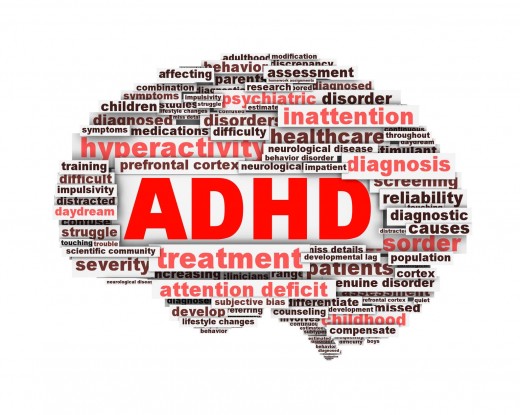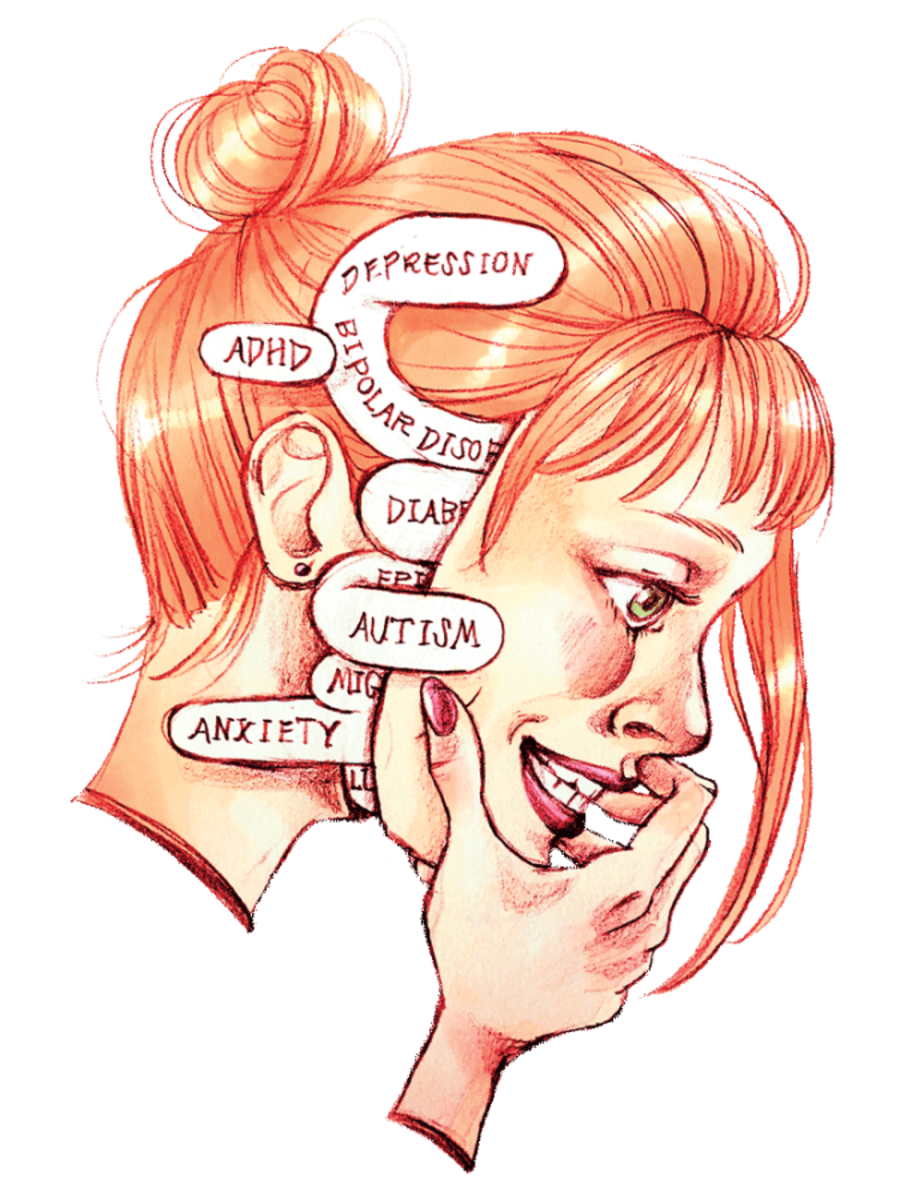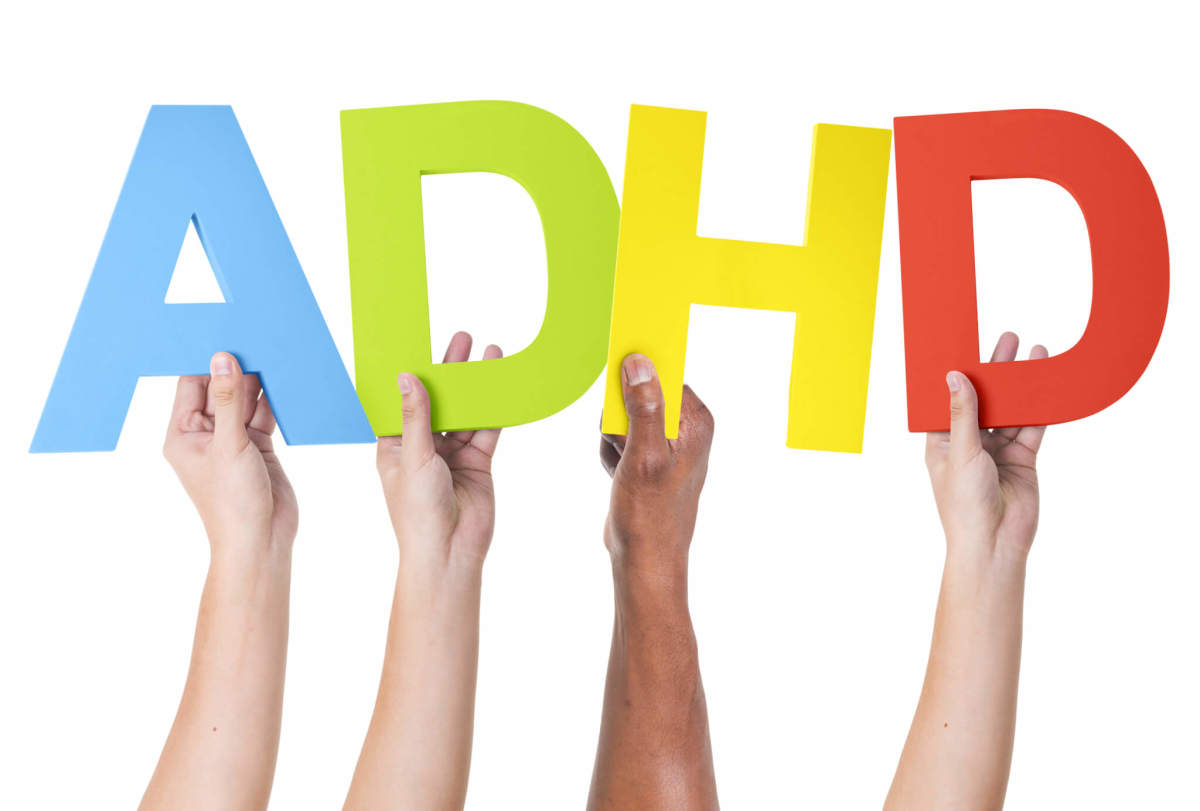ADHD-Attention Pathologies

Attention Pathologies: A Deeper Look at ADHD
Children are notorious for not sitting still and having a hard time paying attention to one subject for any given period of time. While this sounds like the typical kid, some children have a disorder that affects their ability to focus attention. These children are unable to focus attention, sit still, process information, etc. without treatment. Some examples of disorders in which children have a hard time focusing attention are Asperger’s syndrome, Dysexecutive syndrome, and Attention Deficit Hyperactivity Disorder, also known as ADHD. The paragraphs below take a deeper look at ADHD and its causes and treatment.
Attention Deficit Hyperactivity Disorder (ADHD)
The Attention Deficit Hyperactivity Disorder (ADHD) is one of the most common childhood disorders (“What is Attention Deficit”, n.d.). A person is diagnosed in childhood; however, symptoms typically carry over into one’s adult life (“What is Attention Deficit). ADHD is a disorder in which a person’s brain is affected and a person’s ability to focus is diminished (“Attention Deficit”, 2009). Children with ADHD are inattentive, hyperactive, and impulsive (“Attention Deficit”). Some characteristics of inattentiveness are difficulty concentrating, problems focusing and sustaining attention, and problems learning new things (“Attention Deficit”). A hyperactive child may appear restless and fidgety, may have a hard time taking in information, and is unable to sit still (“Attention Deficit”). If a child is experiencing symptoms of impulsiveness, he or she may have problems waiting his or her turn and difficultly thinking before acting (“Attention Deficit”).
There are three sub-types to ADHD (“What is Attention Deficit”, n.d.). Those are “predominately hyperactive-impulsive, predominately inattentive, and combined hyperactive-impulsive and inattentive” (“What is Attention Deficit”, p. 4). The children with predominately-inattentive ADHD usually are overlooked, as it is a milder form (“What is Attention Deficit”). They are less likely to act out (“What is Attention Deficit”). Those with hyperactive-impulsive ADHD are more impulsive than inattentive (“What is Attention Deficit”). The last subtype, combined hyperactive-impulsive and inattentive is, as the name suggest, a combination of impulsiveness and inattentiveness (“What is Attention Deficit”).
Pathology
Studies on the subject have shown that genes play a large role in the cause of ADHD (“Attention Deficit”, 2015). While the exact cause has not been found, scientists have found that a combination of factors is to blame (“Attention Deficit”). Studies done on twins have shown that ADHD commonly runs in families (“Attention Deficit”). Environmental factors could also be to blame, such as brain injuries, nutrition, and social environment (“Attention Deficit”). A potential link between cigarette smoking and alcohol use during pregnancy and ADHD has also been found (“Attention Deficit”). Exposure to a high amount of lead is another potential factor to blame in some instances of ADHD (“Attention Deficit”). A traumatic brain injury could also be the cause of ADHD in some children; however, the percentage is low (“Attention Deficit”). Many studies have been done in order to find the exact cause of ADHD (“Attention Deficit”). While this is still unknown, many researchers and scientists believe genetics are the most common cause of ADHD (“Attention Deficit”).
Farone and Biederman (2002) explain that the pathophysiology and origin of ADHD has not been found completely, but studies have shown favor towards some factors. Farone and Biederman also found that a significant amount of children with September birthdays had ADHD. From this correlation, it was found that first trimester viral infections might account in some subtypes of ADHD (Farone & Biederman). A complex combination of risk factors is thought to be the cause (Farone & Biederman). As mentioned above, some cases could be the result of a head injury, lead exposure, social factors, etc. but studies have found that main cause to be genetics and a complex combination of risk factors (Farone & Biederman).
Treatments
ADHD is a chronic disorder with pervasive symptoms (“Attention Deficit”, 2015). This means that a person with ADHD is affected throughout his or her entire life (“Attention Deficit”). Merriam-Webster (2015) defines pervasive as “existing in or spreading through every part of something.” This means that an individual experiences symptoms of ADHD in every part of their life. “When ADHD is untreated, there is increased prevalence of certain psychological disorders (e.g., major depression, bipolar disorder, conduct disorder, oppositional-defiant disorder, antisocial personality)” (Lakhan, & Kirchgessner, 2012, p. 3). ADHD cannot be cured, but it can be managed a few different ways (“Treatment”, 2014). Early treatment can decrease negative outcomes of ADHD (Lakham & Kirchgessner). Some of the treatment options include “medications, behavioral intervention strategies, parent training, school accommodations and interventions” (“Treatment”, p. 8).
The treatment that has proven to work best is a combination of behavior therapy and medication (“Treatment”, 2014). Both stimulants and non-stimulants can be given to an individual in order to treat ADHD (“Treatment”). The most common medications given are methylphenidate or dextroamphetamine-AMP (Lakham & Kirchgessner, 2012). Some examples of behavioral therapy techniques that could help are creating a routine, limiting distractions, using goals and rewards, and disciplining effectively (Lakham & Kirchgessner). Doctors typically will prescribe the behavior interventions and parents and teachers are then responsible for administering them to the children (Lakham & Kirchgessner).
It seems common that children are unable to sit still, cannot stay focused on given tasks for long periods of time, and have trouble listening when being spoken to, but there are some children who suffer from ADHD. This means the child cannot focus attention and has trouble in many other cognitive areas as a result of a brain condition. The most common cause of this is genetics, as it is thought that ADHD may run in families. While there is treatment for ADHD, there is no cure, and symptoms typically follow children into adulthood.
References
Attention Deficit/Hyperactivity Disorder (ADHD). (2015). American Speech-Language-Hearing Association. Retrieved from http://www.asha.org/public/speech/disorders/ADHD/
Farone, S. & Biederman, J. (2002). Pathophysiology of Attention-Deficit/Hyperactivity Disorder. Lippincott, Williams, & Wilkins, Philadelphia, Pennsylvania.
Lakhan, S. E., & Kirchgessner, A. (2012). Prescription stimulants in individuals with and without attention deficit hyperactivity disorder: misuse, cognitive impact, and adverse effects. Brain and Behavior, 2(5), 661–677. doi:10.1002/brb3.78
Merriam-Webster. (2015). Pervasive. Retrieved from http://www.merriam-webster.com/dictionary/pervasive
What is Attention Deficit Hyperactivity Disorder (ADHD, ADD)? (n.d.). National Institute of Mental Health. Retrieved from http://www.nimh.nih.gov/health/topics/attention-deficit-hyperactivity-disorder-adhd/index.shtml
Treatment. (2014). Centers for Disease Control and Prevention. Retrieved from http://www.cdc.gov/ncbddd/adhd/treatment.html









